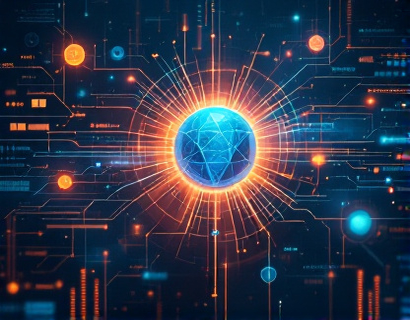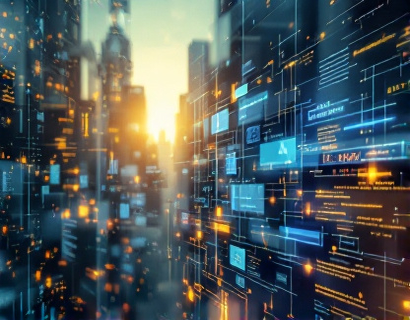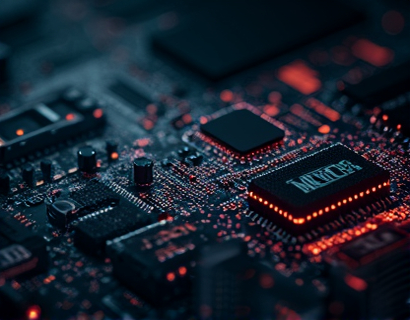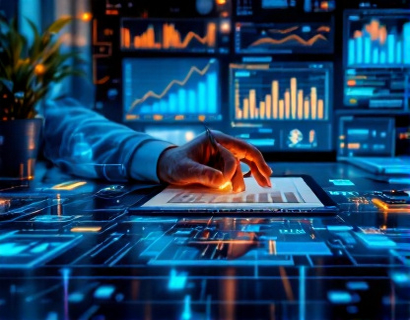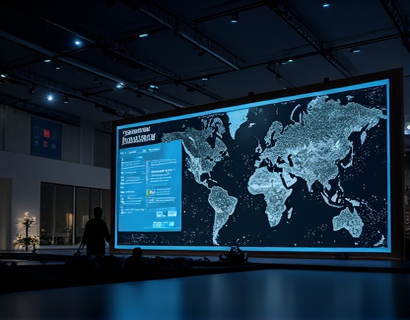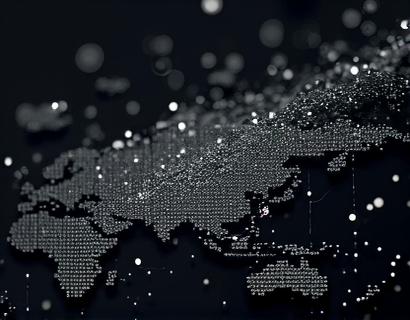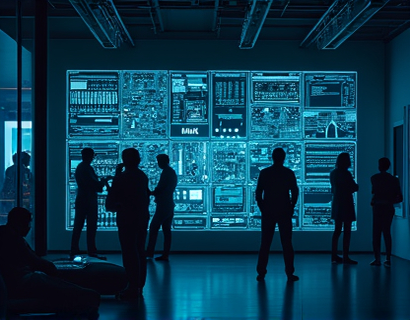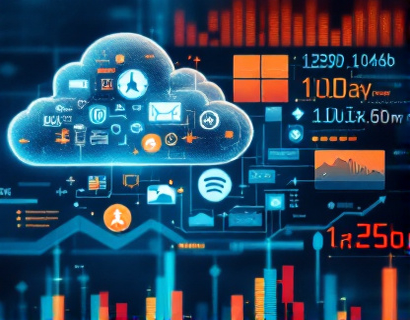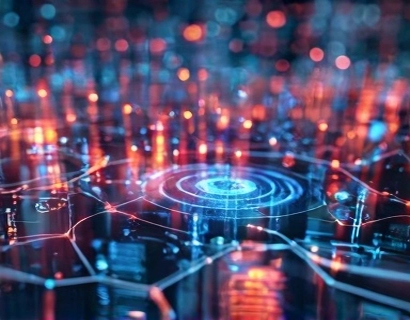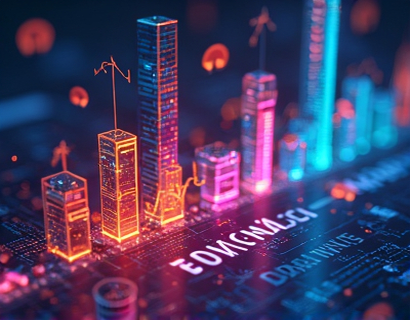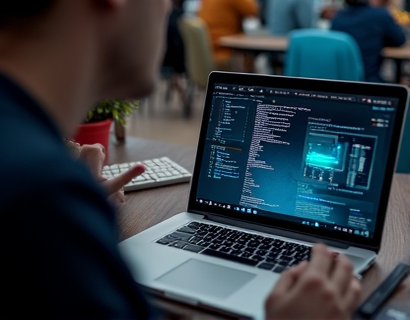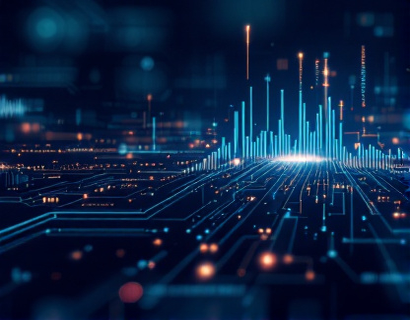Decentralized Productivity: Revolutionizing App Ecosystems with AI and Crypto Integration
The integration of cryptocurrency and artificial intelligence (AI) is ushering in a new era of decentralized productivity, transforming app ecosystems and redefining user experiences. This shift promises to streamline tasks, enhance efficiency, and empower users like never before. As tech enthusiasts and professionals increasingly adopt these technologies, understanding their potential and implications becomes crucial. This article delves into the transformative impact of merging cryptocurrency and AI to revolutionize productivity and user experience, offering insights into the next generation of decentralized app ecosystems.
At the core of this revolution is the decentralized nature of these new app ecosystems. Traditional centralized systems rely on a single authority or entity to manage and control operations, which can lead to bottlenecks, security vulnerabilities, and limited user control. In contrast, decentralized systems distribute control across a network of nodes, ensuring transparency, security, and enhanced user autonomy. This decentralized approach is particularly well-suited for app ecosystems, where multiple applications and services interact and depend on each other.
Cryptocurrency plays a pivotal role in this decentralized framework by serving as a native token or currency within the ecosystem. These tokens facilitate transactions, reward users for contributing value, and provide a means of incentivizing participation. For instance, in a decentralized productivity app, users might earn tokens for completing tasks, sharing resources, or providing valuable insights. These tokens can then be used to access premium features, purchase services from other app users, or even vote on the direction of the ecosystem.
AI, on the other hand, brings intelligence and automation to these decentralized systems. Machine learning algorithms can analyze vast amounts of data to optimize app performance, predict user needs, and automate routine tasks. For example, an AI-driven productivity app can learn a user's work patterns and suggest optimal times for tasks, automate repetitive actions, and provide personalized recommendations based on historical data. This synergy between AI and decentralization creates a powerful toolset for enhancing user productivity and satisfaction.
The combination of cryptocurrency and AI in decentralized app ecosystems offers several key benefits. First, it promotes a more equitable and user-centric environment. Traditional app ecosystems often prioritize profit over user experience, leading to paywalls, limited functionality, and data exploitation. Decentralized apps (dApps) powered by AI and cryptocurrency can operate on a more transparent and user-friendly model, where users have greater control over their data and contributions are fairly rewarded.
Second, these ecosystems foster innovation and collaboration. Developers can build on existing decentralized infrastructure, creating a network effect that accelerates the development of new applications and services. The open nature of decentralized platforms encourages community involvement, leading to rapid iteration and improvement. AI enhances this process by providing tools for efficient development, testing, and optimization, further lowering the barriers to entry for new contributors.
Third, the integration of AI and cryptocurrency enhances security and trust. Blockchain technology, the backbone of cryptocurrency, ensures that transactions and data interactions are immutable and verifiable. AI can complement this by detecting and mitigating potential security threats in real-time, such as fraudulent activities or malicious code. This dual-layer security approach builds trust among users, encouraging broader adoption and participation in the ecosystem.
To better understand the practical applications of this technology, consider a decentralized productivity suite that leverages both AI and cryptocurrency. Such a suite could include a decentralized task manager, a smart document collaboration tool, and an AI-powered virtual assistant. The task manager uses blockchain to ensure task assignments and completions are transparent and tamper-proof, while AI optimizes task scheduling and resource allocation based on user preferences and historical data. The smart document collaboration tool employs AI to facilitate seamless real-time editing and suggests improvements based on collaborative patterns, all while ensuring data ownership and privacy through cryptocurrency-based access controls.
Another compelling example is a decentralized marketplace for freelance services, where AI matches clients with the most suitable freelancers based on skill sets, availability, and past performance. Transactions are handled using cryptocurrency, ensuring fair compensation and reducing the need for intermediaries. AI-driven chatbots and virtual assistants can handle customer support, contract negotiations, and even provide legal advice, all while maintaining user data privacy and security.
The technical underpinnings of these decentralized app ecosystems are built on blockchain platforms such as Ethereum, Binance Smart Chain, and Solana. These platforms provide the necessary infrastructure for smart contracts, which are self-executing contracts with the terms directly written into code. Smart contracts automate and enforce agreements between parties, reducing the need for trust and intermediaries. AI algorithms run on these blockchains or interact with them through APIs, leveraging the computational power and security of the blockchain network.
One of the most significant challenges in this space is scalability. Blockchain networks, especially those used for decentralized applications, can face performance issues as the number of users and transactions grows. However, advancements in layer 2 solutions, such as rollups and sidechains, are addressing these scalability concerns. These solutions process transactions off the main blockchain and then batch them for efficient inclusion, significantly improving throughput and reducing costs.
Interoperability is another critical aspect. As different blockchain platforms and ecosystems emerge, the ability for these systems to communicate and work together seamlessly becomes essential. Protocols like Polkadot and Cosmos are leading the way in creating interoperable networks, allowing dApps to operate across multiple blockchains and leverage the strengths of each platform. This interoperability ensures that users can access a wide range of services and tools within a cohesive and integrated ecosystem.
Privacy remains a paramount concern in decentralized app ecosystems. While blockchain's transparency is a strength, it can also expose sensitive user data. To address this, privacy-enhancing technologies such as zero-knowledge proofs and homomorphic encryption are being integrated into these systems. These technologies allow for secure and private data processing, ensuring that user information remains confidential while still enabling AI algorithms to function effectively.
The future of decentralized productivity app ecosystems is bright, with numerous potential developments on the horizon. One area of focus is the integration of extended reality (XR) technologies, including virtual reality (VR) and augmented reality (AR). AI can enhance these experiences by providing intelligent interactions and personalized content, while decentralized platforms ensure that users retain control over their data and environments. This convergence could lead to immersive and highly productive workspaces that blur the lines between physical and digital realms.
Another promising direction is the development of decentralized finance (DeFi) integrated productivity tools. By combining AI-driven financial analytics with decentralized financial services, users can make informed decisions, automate investments, and manage their assets more efficiently. For example, an AI-powered DeFi assistant could analyze market trends, suggest optimal investment strategies, and execute trades autonomously, all within a secure and transparent decentralized framework.
In conclusion, the integration of cryptocurrency and AI is revolutionizing app ecosystems, paving the way for more decentralized, secure, and user-centric productivity tools. These ecosystems not only streamline tasks and enhance efficiency but also empower users with greater control and ownership. As technology continues to evolve, the potential for innovation and transformation in this space is immense, offering exciting opportunities for tech enthusiasts and professionals alike.





